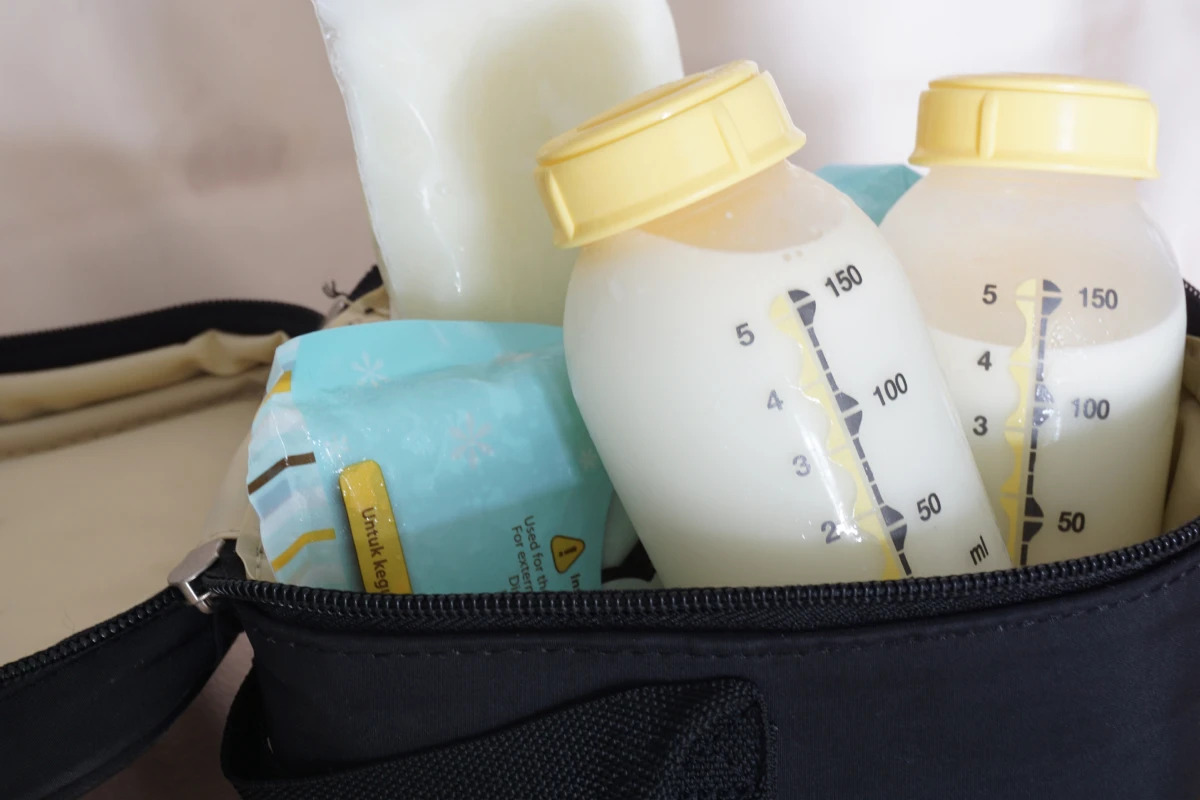

Articles
How To Store Breast Milk While Traveling
Modified: October 20, 2024
Learn how to safely store breast milk while traveling with these helpful articles. Protect your baby's nutrition on the go.
(Many of the links in this article redirect to a specific reviewed product. Your purchase of these products through affiliate links helps to generate commission for Storables.com, at no extra cost. Learn more)
Introduction
Traveling can be a challenging experience for breastfeeding mothers, especially when it comes to storing breast milk. However, with the right knowledge and preparation, it is possible to safely store breast milk while on the go. Proper storage ensures that the milk remains fresh and nutritious for your baby, even during travel.
Before we delve into the details of storing breast milk while traveling, it’s important to understand the safety guidelines. The guidelines ensure that the milk remains free from contamination and that your baby receives the highest quality milk.
Choosing the right containers is crucial for maintaining the integrity of breast milk. The containers should be leak-proof and made of safe materials that do not pose any health risks. Additionally, packing essentials such as extra bottles, lids, and labels will help keep everything organized and easily accessible.
When traveling with breast milk, you have a few options for storage. If you have access to a refrigerator, you can store the milk there. Alternatively, a cooler bag with ice packs can be used for shorter durations. If you’ll be away for an extended period, a freezer may be your best option. Thawing and warming breast milk properly is equally important to ensure that your baby receives the milk safely and at the correct temperature.
Finally, we’ll provide you with some useful tips for pumping and storing breast milk on the go, making your journey more convenient and stress-free. These tips will help you maintain a regular pumping schedule and ensure that your baby has an ample supply of breast milk even while you’re away.
In this article, we will explore each of these topics in detail to ensure that you’re equipped with the knowledge and tools necessary to store breast milk while traveling. Let’s begin by understanding the safety guidelines for storing breast milk.
Key Takeaways:
- Properly storing breast milk while traveling involves following safety guidelines, choosing the right containers, and utilizing methods such as refrigeration, cooler bags, and freezing to maintain its quality and nutritional value.
- Pumping and storing breast milk on the go requires planning, cleanliness, and awareness of travel regulations. With the right tools and strategies, breastfeeding mothers can ensure their babies receive nourishing milk while traveling.
Read more: How To Store And Freeze Breast Milk
Understanding the Safety Guidelines
When it comes to storing breast milk, it’s important to follow safety guidelines to ensure the health and well-being of your baby. The guidelines are designed to prevent contamination and maintain the nutritional value of the milk. Here are some key points to keep in mind:
1. Cleanliness: Before expressing breast milk, make sure to wash your hands with soap and water. Clean all the pumping equipment, including bottles, breast pump parts, and nipples, with hot, soapy water or in the dishwasher. Rinse thoroughly to remove any soap residue. This helps to prevent the transfer of bacteria to the milk.
2. Proper labeling: Label each container with the date and time of expression. This ensures that the oldest milk is used first and helps you keep track of freshness. Use waterproof labels or tape to prevent smudging or fading.
3. Storage time: Breast milk can be safely stored for a certain period of time at different temperatures. In general, freshly expressed milk can be stored at room temperature (up to 77°F or 25°C) for up to 4 hours. In a refrigerator (set to 39°F or 4°C), it can be stored for up to 4 days. If you need to store milk for a longer period, freezing is recommended.
4. Storage containers: Use breast milk storage bags or clean, BPA-free plastic or glass bottles to store breast milk. These containers should be specifically designed for breast milk storage and have a secure seal to prevent leaks and contamination.
5. Thawed milk: Once frozen breast milk is thawed, it should be used within 24 hours. Do not refreeze thawed milk, as it can affect its quality and safety.
6. Temperature control: Maintain the temperature of stored breast milk during transportation. If you don’t have access to refrigeration, use a cooler bag or insulated bottle carrier with ice packs to keep the milk cold. This will help prevent bacterial growth and maintain the freshness of the milk.
By following these safety guidelines, you can ensure that your breast milk remains safe for your baby to consume. Now that you have a good understanding of the guidelines, let’s move on to choosing the right containers for storing breast milk while traveling.
Choosing the Right Containers
When it comes to storing breast milk while traveling, choosing the right containers is crucial. The containers should be leak-proof, made of safe materials, and convenient to use. Here are some factors to consider when selecting containers for storing breast milk:
1. Breast Milk Storage Bags: Breast milk storage bags are a popular choice for storing breast milk while on the go. These bags are specifically designed for breast milk storage, with a secure seal to prevent leaks and contamination. They are also space-efficient, as they can be stored flat in a cooler bag or suitcase. Look for bags that are made of BPA-free material and have accurate volume markings for easy measuring.
2. Plastic Bottles: If you prefer using traditional bottles, opt for BPA-free plastic bottles specifically designed for breast milk storage. These bottles should have airtight lids or sealing discs to prevent leaks. Look for bottles that are dishwasher-safe, as this makes cleaning and sterilizing them much easier.
3. Glass Bottles: Glass bottles are another option for storing breast milk. They are durable, easy to clean, and do not contain any harmful chemicals. Look for glass bottles that come with leak-proof lids or sealing discs. Keep in mind that glass bottles are heavier and more fragile than plastic bottles, so make sure they are securely packed for travel.
4. Insulated Bottles: For longer trips or when refrigeration is not readily available, consider using insulated bottles. These bottles are designed to keep breast milk cold for extended periods by providing insulation against temperature changes. They often come with a built-in ice pack or a space to insert one. Insulated bottles are handy for maintaining the freshness and quality of breast milk while on the go.
5. Consider Convenience: Choose containers that are easy to use and assemble. Look for containers that have wide openings, making it easier to pour milk in and out. Additionally, containers with clear markings for measuring milk volume can be helpful for accurate portioning.
Remember to always wash and sanitize the containers before and after use to maintain cleanliness. Following proper hygiene practices will help ensure the safety and quality of the stored breast milk.
Now that you know how to choose the right containers for storing breast milk while traveling, let’s move on to understanding the essentials you’ll need for packing when traveling with breast milk.
Packing Essentials for Traveling with Breast Milk
Traveling with breast milk requires careful organization and packing to ensure the safety and freshness of the milk. Here are some essential items you’ll need when traveling with breast milk:
1. Extra Bottles: Pack extra bottles for storing breast milk during your trip. Having spare bottles ensures that you have enough storage space for the milk you express along the way. Look for bottles that are compatible with your breast pump and chosen storage containers.
2. Lids and Sealing Discs: Don’t forget to pack extra bottle lids or sealing discs to secure your containers. These provide a leak-proof seal and help maintain the freshness of the milk. Having extras on hand is essential in case any get misplaced or damaged.
3. Labels and Marker: Label each bottle or storage bag with the date and time it was expressed. This helps you keep track of which milk to use first based on freshness. Use waterproof labels or a permanent marker to ensure the labels won’t smudge or fade during transportation.
4. Insulated Cooler Bag: An insulated cooler bag is essential for storing breast milk when refrigeration is not available. Look for a bag that is roomy enough to hold your bottles or storage bags along with ice packs. The insulation helps maintain a cool temperature, ensuring that the milk stays fresh during your travels.
5. Ice Packs: Ice packs are crucial for keeping breast milk cold while on the go. Choose reusable ice packs that are specifically designed for cooler bags or breast milk storage. Freeze them prior to your trip and place them in the cooler bag alongside the milk containers. This will help maintain a cool temperature and prevent bacterial growth.
6. Cooler Bag Inserts: Consider using cooler bag inserts or dividers to keep your milk containers organized and prevent them from shifting or bumping into each other during transportation. These inserts help maintain the integrity of the milk and reduce the risk of spills or leaks.
7. Insulated Water Bottle: Staying hydrated while traveling is important for maintaining milk supply. Carry an insulated water bottle to keep your water cool throughout the journey. Drinking enough water will help ensure that you can continue pumping properly and provide ample breast milk for your baby.
8. Cleaning Supplies: Pack a small bottle of dish soap and a bottle brush for cleaning your pump parts and bottles while on the go. Look for travel-size options or invest in a compact cleaning kit designed for breast pump accessories. This will help maintain hygiene and ensure the safety of the milk.
By packing these essentials, you’ll be well-prepared to store and transport your breast milk during your travels. In the next sections, we’ll dive into the different methods of storing breast milk while on the go. We’ll explore storing breast milk in a refrigerator, using a cooler bag, and utilizing ice packs to keep it cold.
Storing Breast Milk in a Refrigerator
When traveling with breast milk, having access to a refrigerator can be a great advantage. Storing breast milk in a refrigerator helps maintain its freshness and quality. Here’s how you can effectively store breast milk in a refrigerator while on the go:
1. Proper Storage Containers: Use BPA-free plastic or glass bottles, or breast milk storage bags, to store the milk in the refrigerator. Ensure that the containers are clean and have airtight lids or seals to prevent leaks and contamination.
2. Label and Date: Label each container with the date and time of expression. This will help you keep track of which milk to use first based on freshness. Using a waterproof label or a permanent marker is recommended to ensure the labels won’t smudge or fade.
3. Refrigerator Temperature: Set the temperature of the refrigerator between 32°F to 39°F (0°C to 4°C) to ensure the milk is kept at the proper temperature. Lower temperatures may freeze the milk, while temperatures above 39°F (4°C) can compromise its quality and safety.
4. Placement in the Refrigerator: Store the breast milk containers in the main compartment of the refrigerator, away from the door. Temperature fluctuations are minimal in this area, ensuring that the milk remains at a steady and safe temperature.
5. Freshness Timeframe: Breast milk stored in a refrigerator can typically be kept for up to 4 days. However, it’s important to note that the sooner the milk is consumed, the higher its nutritional value. If you don’t plan on using the milk within the recommended timeframe, consider freezing it for longer storage.
6. Avoid Temperature Fluctuations: Try to minimize the frequency of opening and closing the refrigerator door. Frequent temperature changes can affect the quality and safety of the stored breast milk. If you’re staying in a hotel or Airbnb, communicate your needs to the staff to ensure that other guests do not disrupt the refrigerator temperature by frequently opening the door.
Storing breast milk in a refrigerator while traveling provides a convenient and safe option for keeping the milk fresh. However, if you’re on a longer trip or do not have access to a refrigerator, utilizing a cooler bag and ice packs can help maintain the temperature and quality of the breast milk. We’ll explore this method in detail in the next section.
Read more: How To Store Pumped Breast Milk
Storing Breast Milk in a Cooler Bag
When traveling with breast milk and access to a refrigerator is not available, utilizing a cooler bag can be an excellent option for storing breast milk. A properly insulated cooler bag, combined with ice packs, can help maintain the temperature and freshness of the milk. Here’s how to store breast milk in a cooler bag while on the go:
1. Insulated Cooler Bag: Choose a cooler bag that is specifically designed for storing breast milk. Look for one that is well-insulated to keep the milk cold for an extended period. An ideal cooler bag will have enough space to hold your storage containers and ice packs.
2. Pre-chill the Cooler Bag: Before packing your breast milk, it’s helpful to pre-chill the cooler bag. This can be done by placing ice packs in the freezer overnight, keeping them ready for use the next day. A pre-chilled cooler bag helps maintain a consistently cool temperature for a longer duration.
3. Properly Pack the Breast Milk: Place the breast milk containers, whether they are bottles or storage bags, into the cooler bag. Make sure the containers are secure and cannot move or tip over during transportation. If you’re using bottles, ensure the lids are tightly sealed to prevent leakage.
4. Ice Packs: Insert the pre-frozen ice packs into the cooler bag alongside the milk containers. These ice packs help maintain a cool temperature and keep the milk fresh. The number of ice packs needed may vary depending on the duration of your travel, but it’s always better to have extra ice packs on hand.
5. Close and Seal: Zip up or close the cooler bag securely to maintain the temperature inside. Ensure that all openings are properly sealed to prevent warm air from entering the bag, which can compromise the quality of the breast milk.
6. Limited Openings: Limit the number of times you open the cooler bag during your travel. Frequent opening of the bag can cause temperature fluctuations, reducing the effectiveness of the cooler bag in maintaining the milk’s quality. If possible, pack the milk in a separate compartment or section of the bag, allowing easy access without disturbing the other contents.
7. Monitor and Replace Ice Packs: Keep an eye on the ice packs and monitor their temperature throughout your journey. If the ice packs begin to melt or lose their cooling effect, replace them with fresh, frozen ones. This helps ensure that the milk stays at the optimal temperature for as long as possible.
8. Avoid Allowing Milk to Warm: When placing the cooler bag down, try to avoid placing it in direct sunlight or near a heat source. Keeping the bag in a cool and shaded area helps maintain the ideal temperature for storing breast milk.
Storing breast milk in a properly insulated cooler bag with ice packs can keep the milk fresh and safe while you’re on the go. However, for longer trips or if you need to store the milk for an extended period, freezing it can be a more suitable option. We’ll explore this method in the next section.
When traveling, store breast milk in a cooler with ice packs to keep it fresh. Use insulated storage bags or containers to maintain the temperature. Avoid storing breast milk in the door of the refrigerator as it is the warmest spot.
Using Ice Packs to Keep Breast Milk Cold
Ice packs are an essential component for keeping breast milk cold while traveling. They help maintain a cool temperature and ensure the freshness and safety of the milk. Here’s how you can effectively use ice packs to keep your breast milk cold:
1. Freeze Ice Packs in Advance: Before your trip, place the ice packs in the freezer and allow them to freeze completely. Ideally, freeze them overnight or for at least 12 hours before packing them with your breast milk. Fully frozen ice packs provide the longest-lasting cooling effect.
2. Evaluate Duration of Travel: Consider the duration of your travel to determine the number and size of ice packs you’ll need. For shorter trips, a couple of ice packs may be sufficient. However, for longer journeys, you’ll need to pack more ice packs to maintain the cold temperature for an extended period.
3. Plan for Extra Ice Packs: It’s always better to be prepared with extra ice packs. Unexpected delays or longer travel times may require additional cooling. Having extra ice packs on hand ensures that you can replace them if they begin to thaw during your journey.
4. Pack the Ice Packs: Place the frozen ice packs alongside your breast milk containers in your cooler bag or insulated container. Position them strategically to ensure that they come into direct contact with the milk containers, helping to cool them more efficiently. If you’re using a cooler bag, consider placing the ice packs on top and surrounding the milk containers for better insulation.
5. Close and Insulate: Seal the cooler bag or insulated container securely to maintain the cold temperature. Ensure that all openings are closed tightly to prevent warm air from entering and compromising the quality of the milk. If your cooler bag has additional insulation features such as Velcro flaps or extra zippers, use them to further insulate the bag.
6. Monitor and Replace Ice Packs: Regularly monitor the temperature inside the cooler bag or insulated container. If the ice packs begin to thaw or lose their cooling effect, replace them with fresh, frozen ones. This helps maintain a consistently cold temperature and ensures the milk remains safe and fresh.
7. Keep the Cooler Bag in a Cool Area: When traveling, store the cooler bag in a cool area, away from direct sunlight or any other heat sources. Avoid placing it near hot car parts or inside a hot trunk. Keeping the cooler bag in a cool environment helps maintain the desired temperature and prevents the milk from warming up.
8. Plan for Airport Security Checks: If you’re traveling by air, be aware that airport security may request to inspect your breast milk and ice packs. Inform the security personnel about the contents of your cooler bag and comply with their instructions. Explain that the breast milk is for your baby’s consumption, and they will provide guidance on how to handle the milk and ice packs during the security check.
By using ice packs effectively, you can keep your breast milk cold during your travels and ensure that it remains safe and fresh for your baby. In the next section, we’ll explore storing breast milk in a freezer for longer storage periods.
Storing Breast Milk in a Freezer
When longer storage periods are required, freezing breast milk is an excellent option. Freezing helps preserve the quality and nutritional value of the milk. Here’s a step-by-step guide to storing breast milk in a freezer:
1. Choose Freezer-Safe Containers: Select BPA-free plastic or glass containers specifically designed for freezing breast milk. Ensure that the containers have airtight lids or seals to prevent freezer burn and maintain the quality of the milk. Alternatively, you can use breast milk storage bags made for freezing.
2. Clean and Sanitize: Before expressing milk, wash your hands thoroughly and clean the containers or bags with hot soapy water. Rinse them well to remove any soap residue. Sanitize the containers or bags by boiling them in water for 5 minutes or using a sterilizer. Allow them to dry completely before use.
3. Pour and Label: Pour the freshly expressed breast milk into the freezer-safe containers or bags. Leave some room at the top as the milk will expand slightly when frozen. Be sure to label each container or bag with the date of expression to keep track of its freshness.
4. Freeze Immediately: Place the labeled containers or bags in the freezer as soon as possible after expressing breast milk. The freezer temperature should be set at 0°F (-18°C) or below to ensure proper freezing. Avoid placing the breast milk near the freezer door or in areas where it may be exposed to temperature fluctuations.
5. Storage Timeframe: Breast milk can typically be stored in a freezer for up to six months. However, using the milk within three months is recommended to maintain optimal freshness and quality. The longer breast milk is stored, the greater the chance of nutrient degradation.
6. Thawing and Usage: When you’re ready to use the frozen breast milk, transfer it to the refrigerator and allow it to thaw overnight. Gently swirl or shake the container to mix the separated cream and milk layers. Avoid using warm or hot water for thawing, as it can destroy certain beneficial properties of the milk. Thawed breast milk can be stored in the refrigerator for up to 24 hours.
7. Safe Handling: Always practice proper hygiene when handling frozen breast milk. Wash your hands before handling the milk or its containers. Avoid refreezing thawed milk, as it can affect its quality and safety. If there are any concerns about the safety or quality of the milk, discard it to ensure your baby’s health.
Storing breast milk in a freezer allows you to build up a supply for future use. It’s an ideal option for longer trips or when you need to store milk for an extended period. However, if you’ll be traveling with breast milk that has been frozen, it’s important to know how to thaw and warm it properly. We’ll cover these important steps in the next section.
Thawing and Warming Breast Milk
Thawing and warming breast milk properly is crucial to ensure that the milk remains safe and retains its nutritional value. Here are the steps to follow when thawing and warming breast milk:
1. Thawing Frozen Breast Milk:
- Transfer the frozen breast milk from the freezer to the refrigerator. Allow it to thaw slowly overnight or for approximately 12 hours.
- Gently swirl or shake the container to mix the separated cream and milk layers. Do not vigorously shake the milk, as it can disrupt its composition.
- Do not thaw breast milk at room temperature or by using warm or hot water, as these methods can affect the milk’s quality and safety.
2. Warming Thawed Breast Milk:
- To warm the thawed breast milk, fill a bowl with warm water. The water temperature should be around body temperature (approximately 98.6°F or 37°C).
- Place the container of thawed breast milk in the warm water bath. Ensure that the water does not submerge the container’s lid or opening to prevent contamination.
- Allow the milk to warm gradually in the water bath, gently swirling the container occasionally to distribute the warmth evenly. Avoid using high temperatures or microwaving the breast milk, as it can destroy valuable nutrients and create hot spots.
- Check the temperature of the milk by dabbing a small amount on the inside of your wrist or forearm. It should feel comfortably warm, similar to the temperature of breast milk fresh from the breast.
3. Feeding the Warmed Breast Milk:
- Once the thawed breast milk is warmed to the desired temperature, it is ready to be fed to your baby. Pour the milk into a clean bottle or transfer it to a nursing cup, depending on your baby’s feeding preferences.
- Discard any unused portions of thawed and warmed breast milk that have been sitting at room temperature for more than 2 hours or in the refrigerator for more than 24 hours.
- Never refreeze breast milk that has been thawed and warmed, as it can lead to bacterial growth and compromise its safety.
By following these steps, you can safely thaw and warm frozen breast milk for your baby’s consumption. It’s important to note that breast milk may vary in taste and smell after being frozen and thawed. This is normal and does not indicate spoilage or a loss in nutritional value.
Now that you know how to thaw and warm breast milk, let’s move on to some helpful tips for pumping and storing breast milk on the go, making your travel experience more convenient and stress-free.
Read more: How To Store Expired Breast Milk
Tips for Pumping and Storing Breast Milk on the Go
Pumping and storing breast milk while on the go can present some challenges, but with the right strategies and preparation, it can be made more manageable and convenient. Here are some helpful tips to make the process smoother:
1. Plan Ahead: Before your trip, create a pumping schedule based on your baby’s feeding routine. This will help ensure that you pump regularly and maintain your milk supply while away from home.
2. Invest in a Portable Breast Pump: Consider investing in a portable and lightweight breast pump specifically designed for travel. There are many options available, including manual and electric pumps. Look for a pump that is compact, easy to use, and discreet.
3. Carry Extra Pumping Supplies: Pack extra pump parts, such as membranes, valves, and breast shields, in case they get lost or damaged while on the go. Having spare parts ensures that you can continue pumping even if something goes wrong.
4. Use Cooler Bags or Insulated Containers: Utilize insulated cooler bags or containers to store your pumped breast milk. These will help keep the milk cold and maintain its quality during transportation. Remember to include frozen ice packs in the cooler bag to provide additional cooling.
5. Prioritize Cleanliness: Maintain proper hygiene by washing your hands before pumping and sanitizing your pump parts and storage containers. Pack disposable wipes or a small bottle of dish soap and a brush for cleaning purposes.
6. Label and Date: Label each storage container or bag with the date and time the milk was expressed. This ensures that you use the oldest milk first and helps you keep track of freshness.
7. Know Your Storage Options: Familiarize yourself with the storage options available to you during your travels. Identify locations where you can safely store your breast milk, such as refrigerators at hotels or restaurants.
8. Utilize Freezing when Necessary: If you’re on an extended trip and have access to a freezer, consider freezing your milk to extend its shelf life. Freezing is a great option to keep your supply fresh until you can return home.
9. Stay Hydrated: Drink plenty of fluids to stay hydrated while pumping and traveling. Carry a water bottle with you to ensure you have access to clean drinking water at all times.
10. Research Air Travel Regulations: If you’re traveling by air, familiarize yourself with the regulations regarding transporting breast milk. Check the guidelines for carrying breast milk through security checkpoints and any restrictions on the quantity allowed.
By following these tips, you can effectively pump and store breast milk while on the go. Remember to prioritize cleanliness, maintain a consistent pumping schedule, and ensure proper storage to provide your baby with the best nutrition, even when you’re away from home.
With a little planning and preparation, storing breast milk while traveling becomes easier and more efficient. You can enjoy your journey knowing that your baby will have a fresh and wholesome supply of breast milk throughout your time away.
Now, armed with these tips, you’re ready to embark on your travels while successfully pumping and storing breast milk on the go!
Conclusion
Traveling as a breastfeeding mother may present unique challenges, but with proper planning and preparation, storing breast milk while on the go can be a smooth and stress-free experience. Understanding the safety guidelines for storing breast milk ensures that you maintain its quality and nutritional value.
Choosing the right containers, such as breast milk storage bags or BPA-free plastic or glass bottles, is essential for safe storage. Packing essentials like extra bottles, lids, labels, an insulated cooler bag, and ice packs keep your breast milk organized and at the correct temperature during travel.
Storing breast milk in a refrigerator when available helps maintain its freshness for up to four days. Utilizing a cooler bag with ice packs ensures the milk stays cold for shorter periods without refrigeration. Freezing breast milk is a great option for longer trips or when refrigeration is not possible, with a storage duration of up to six months.
When it’s time to use the stored breast milk, thaw it in the refrigerator overnight and warm it using a warm water bath. Follow proper hygiene practices and discard any milk that has been left at room temperature for too long or in the refrigerator for more than 24 hours.
Remember to plan ahead, stay hydrated, and familiarize yourself with travel regulations when bringing breast milk on flights. By applying the provided tips, you can continue to provide your baby with the nourishment of breast milk, even while away from home.
Ultimately, traveling while breastfeeding is entirely achievable and rewarding. With the right knowledge and tools, you can ensure that your baby receives the nutrients they need, while you enjoy your journey with confidence and peace of mind.
So, go ahead and embark on your travel adventures, knowing that you have the information and strategies to successfully pump and store breast milk while on the go. Happy and safe travels!
Frequently Asked Questions about How To Store Breast Milk While Traveling
Was this page helpful?
At Storables.com, we guarantee accurate and reliable information. Our content, validated by Expert Board Contributors, is crafted following stringent Editorial Policies. We're committed to providing you with well-researched, expert-backed insights for all your informational needs.
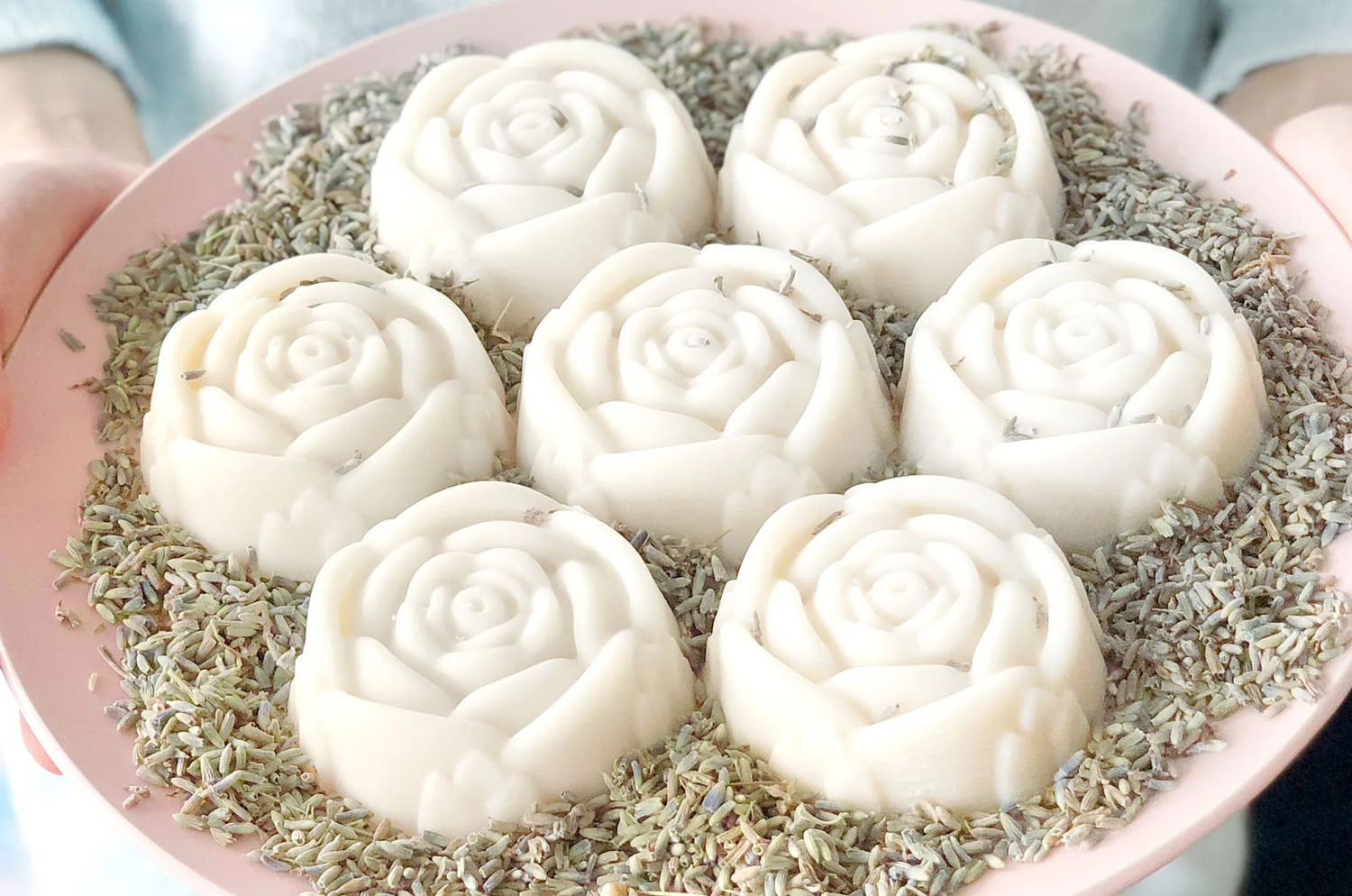
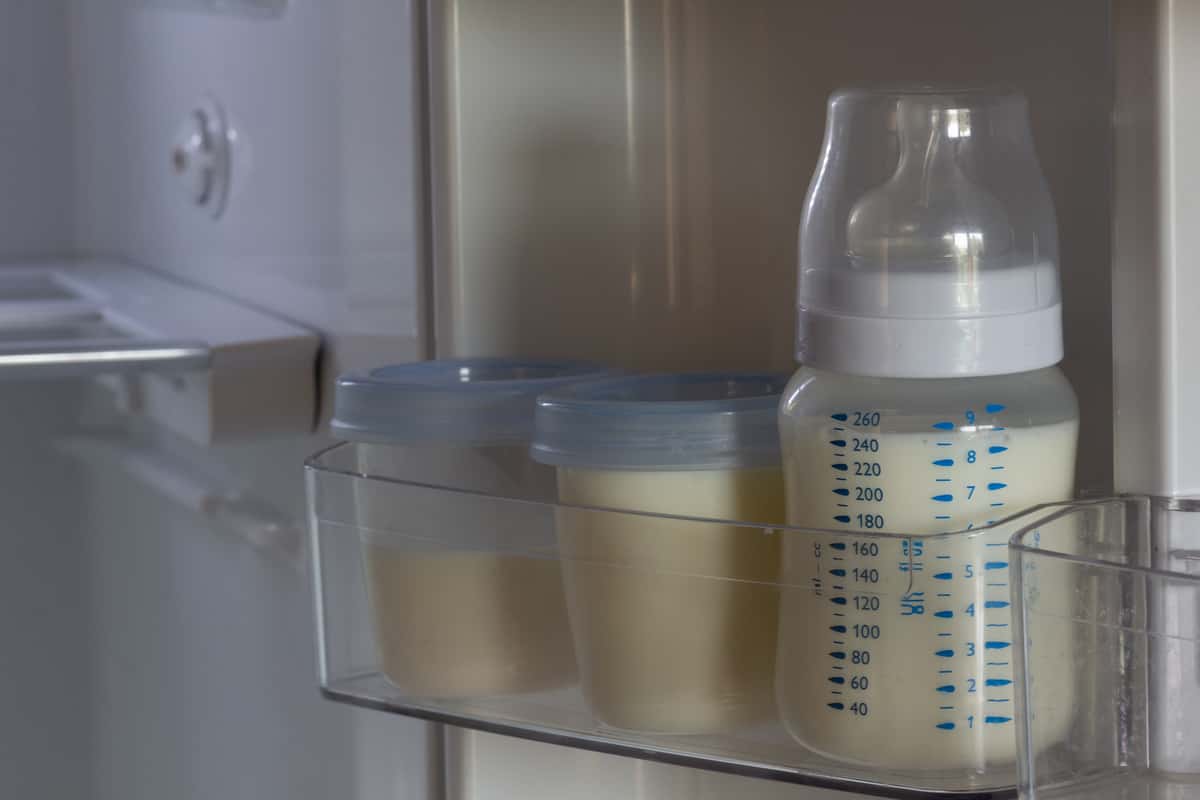
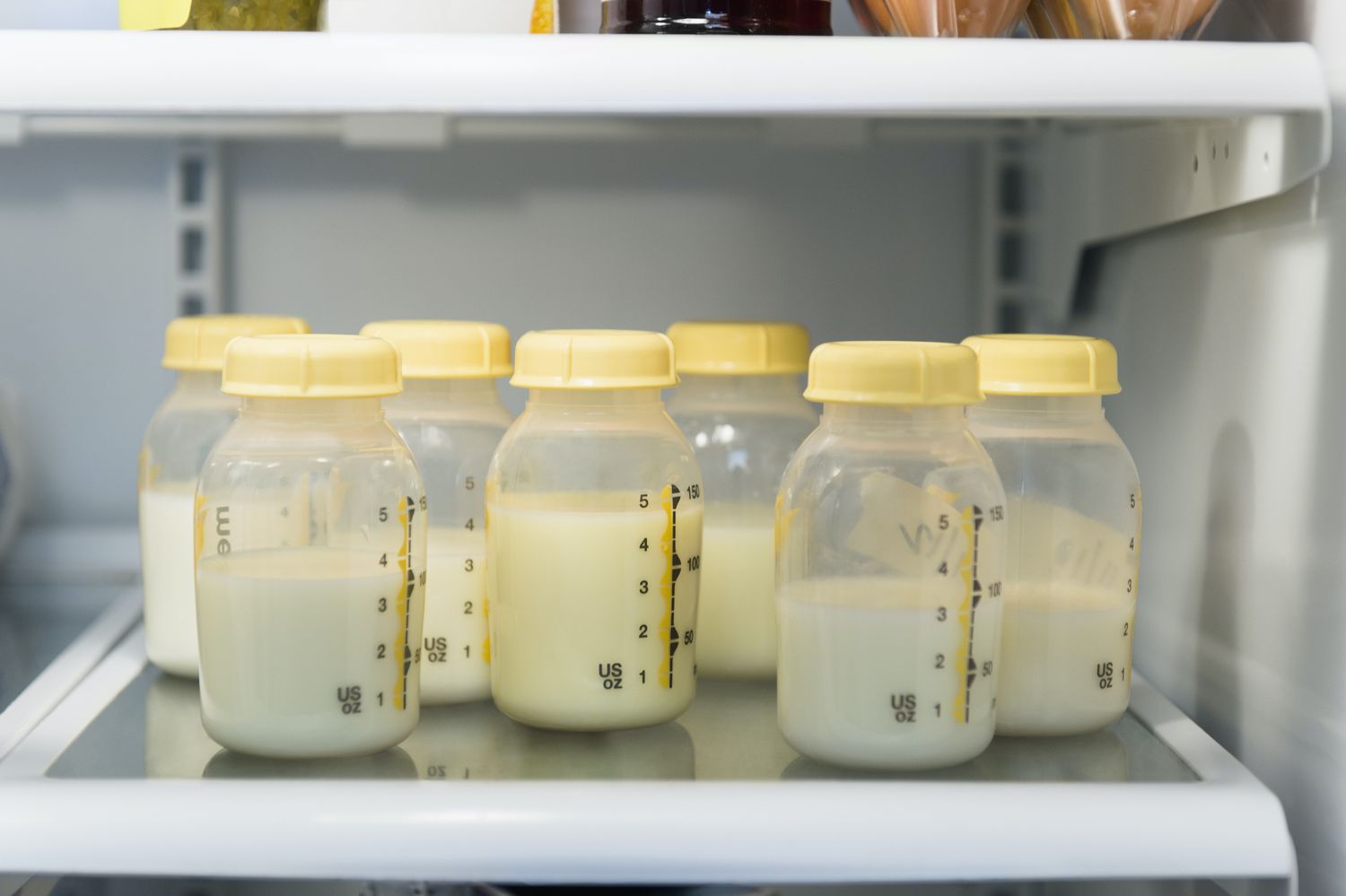
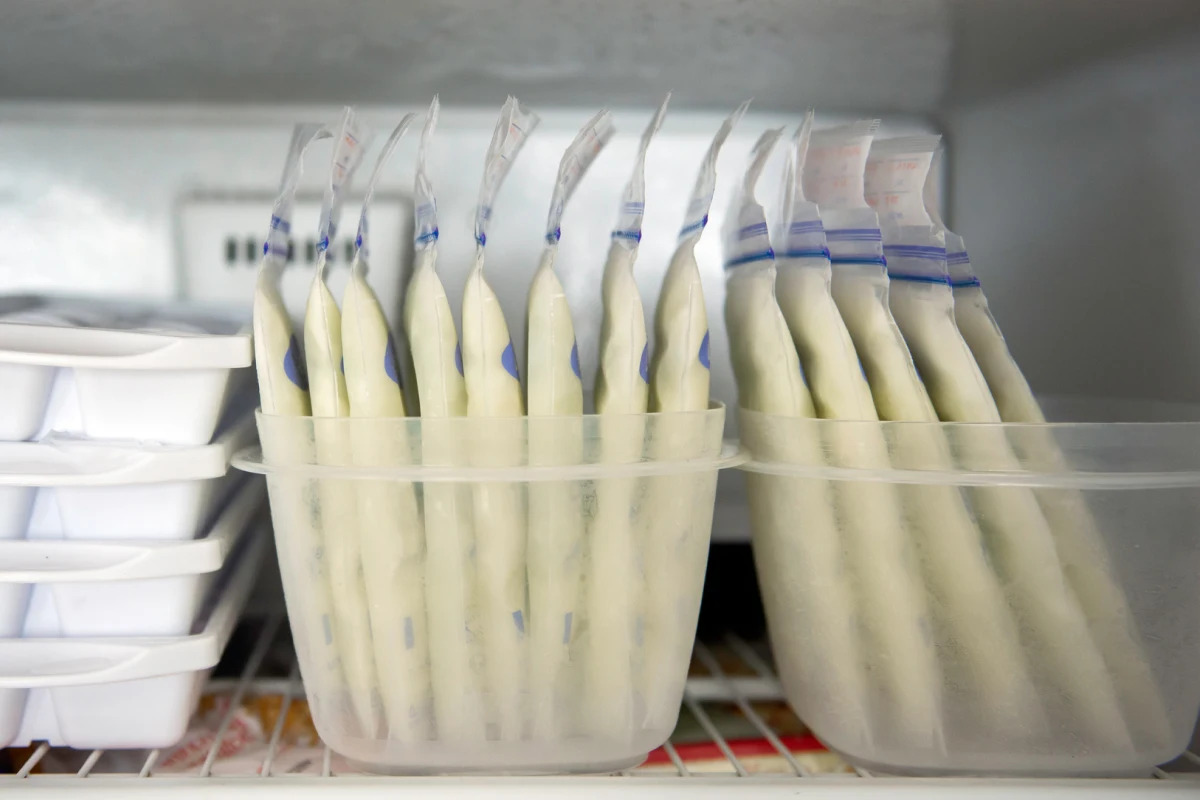
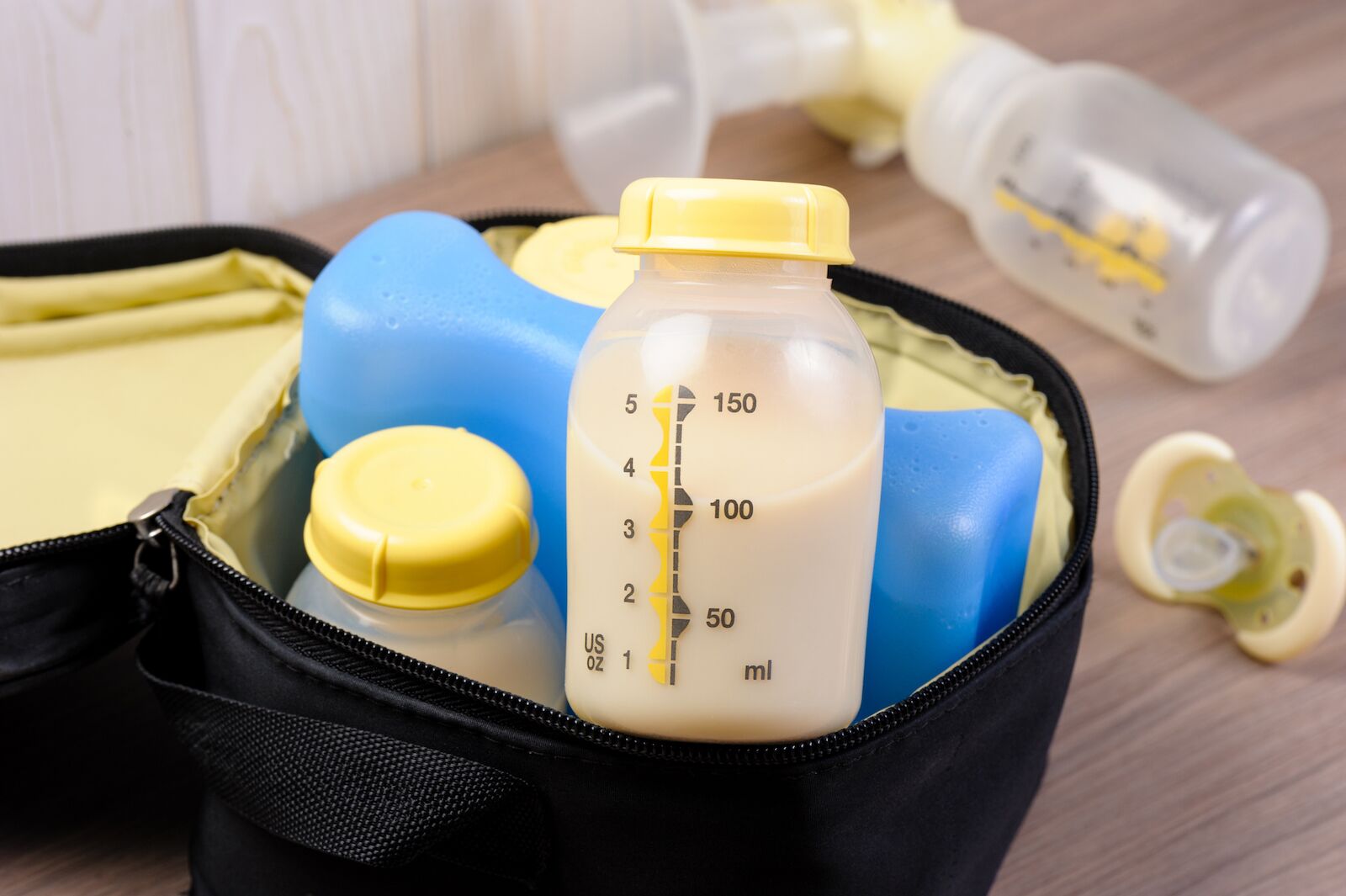
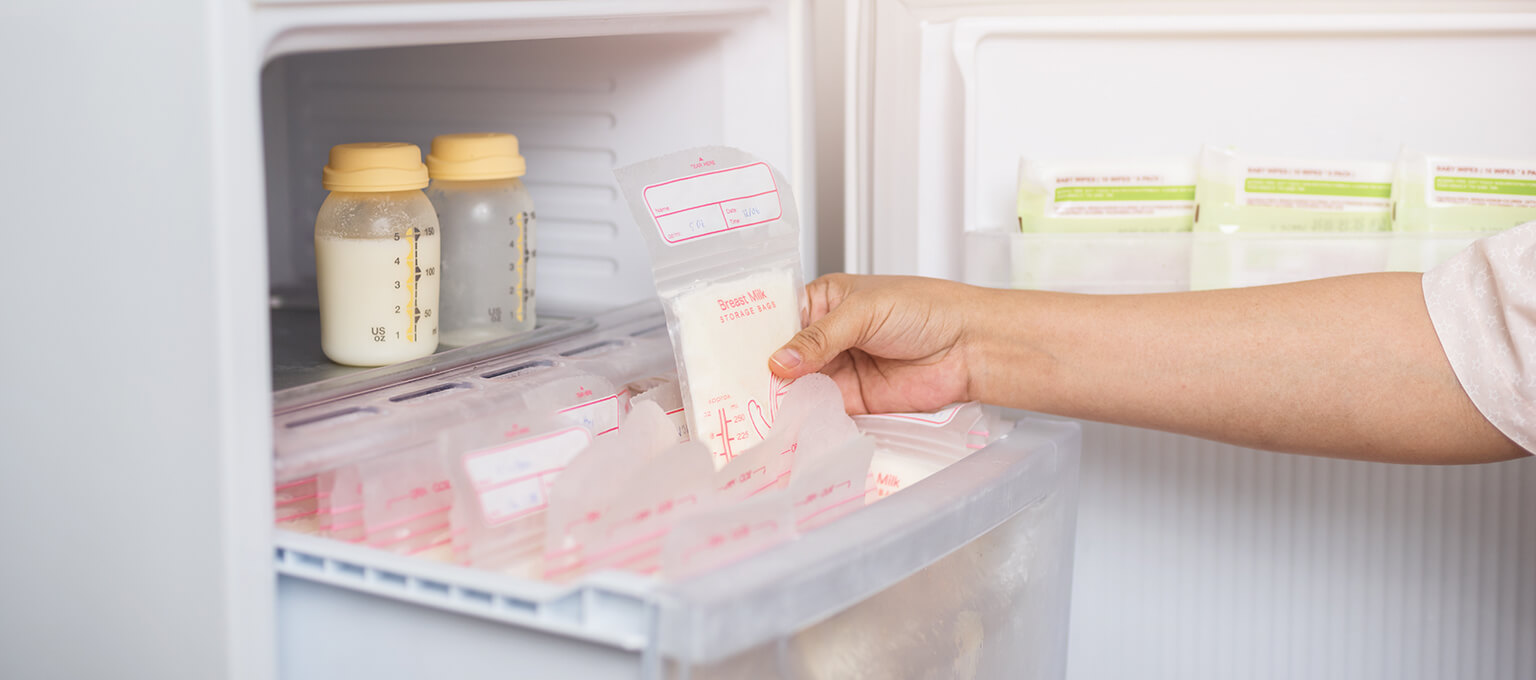

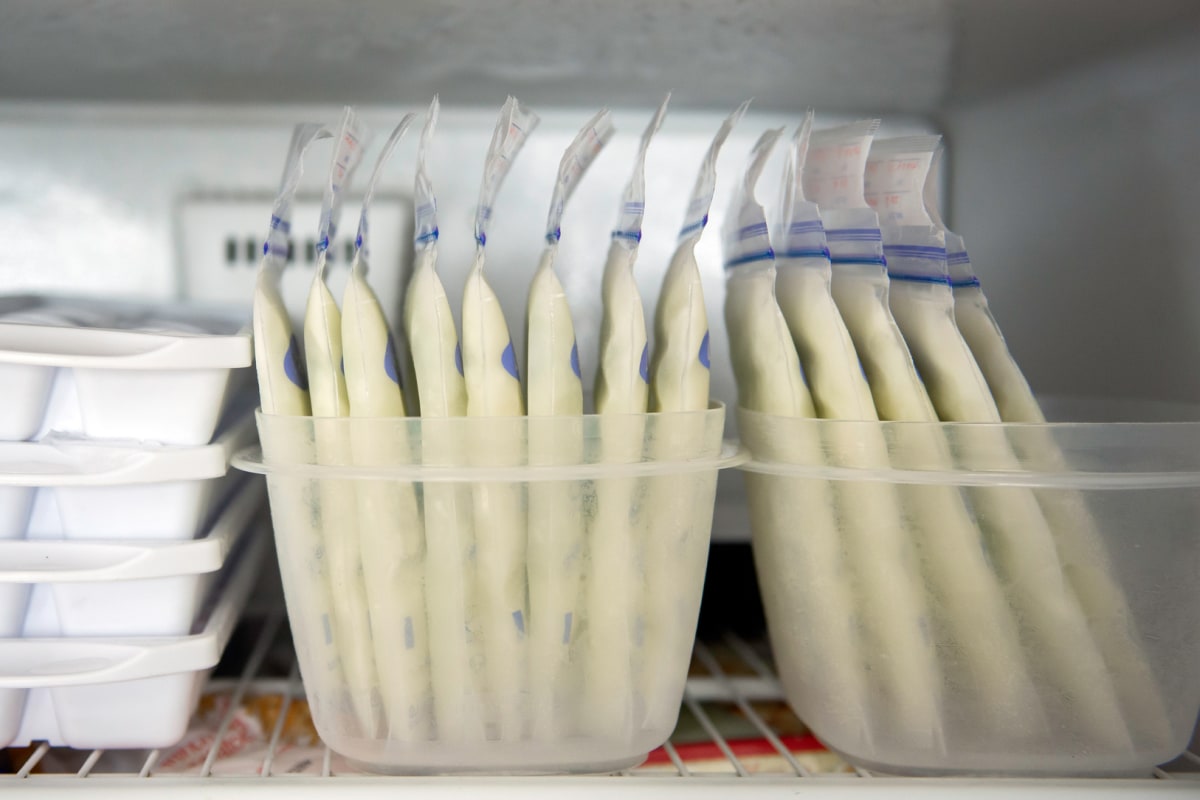
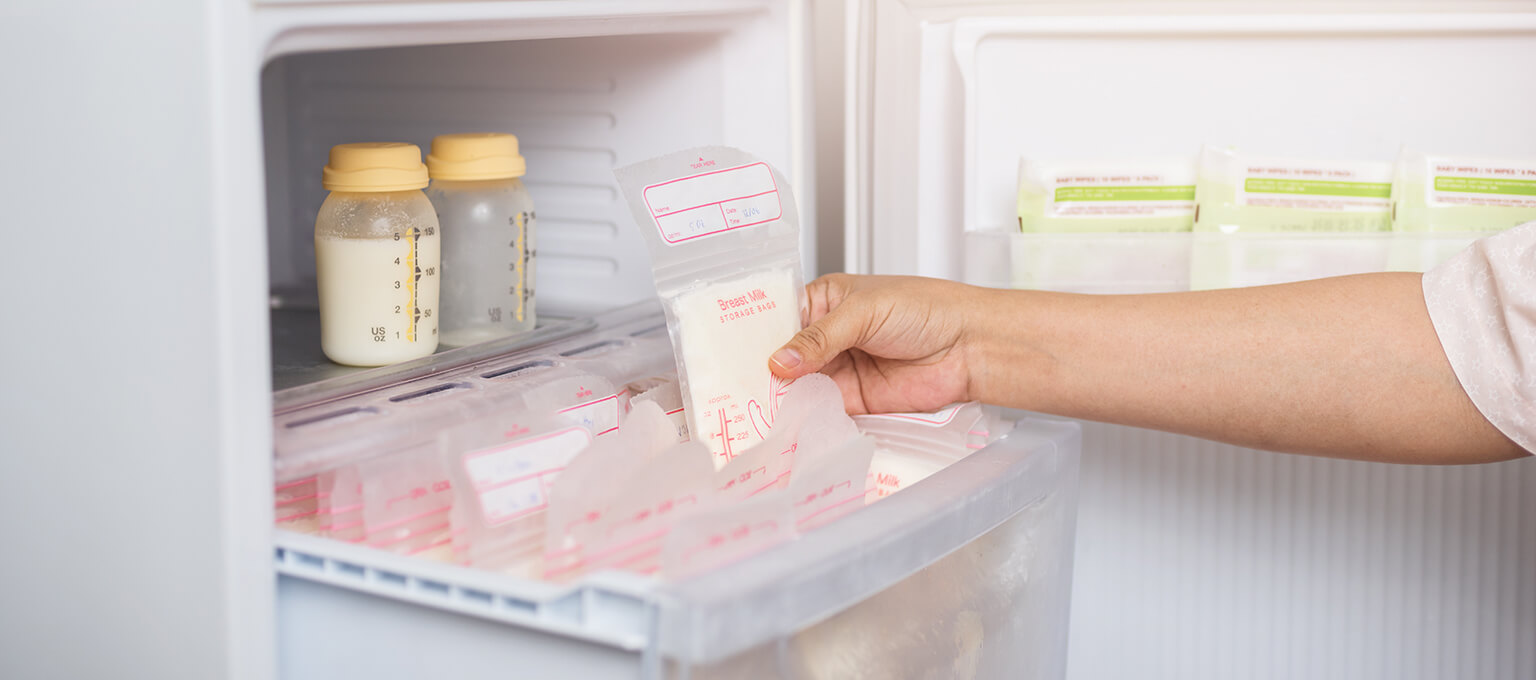

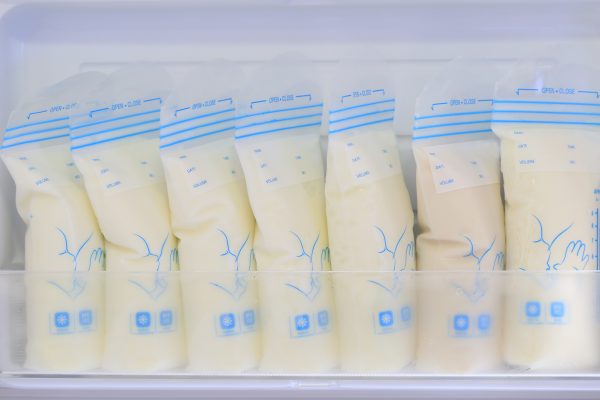
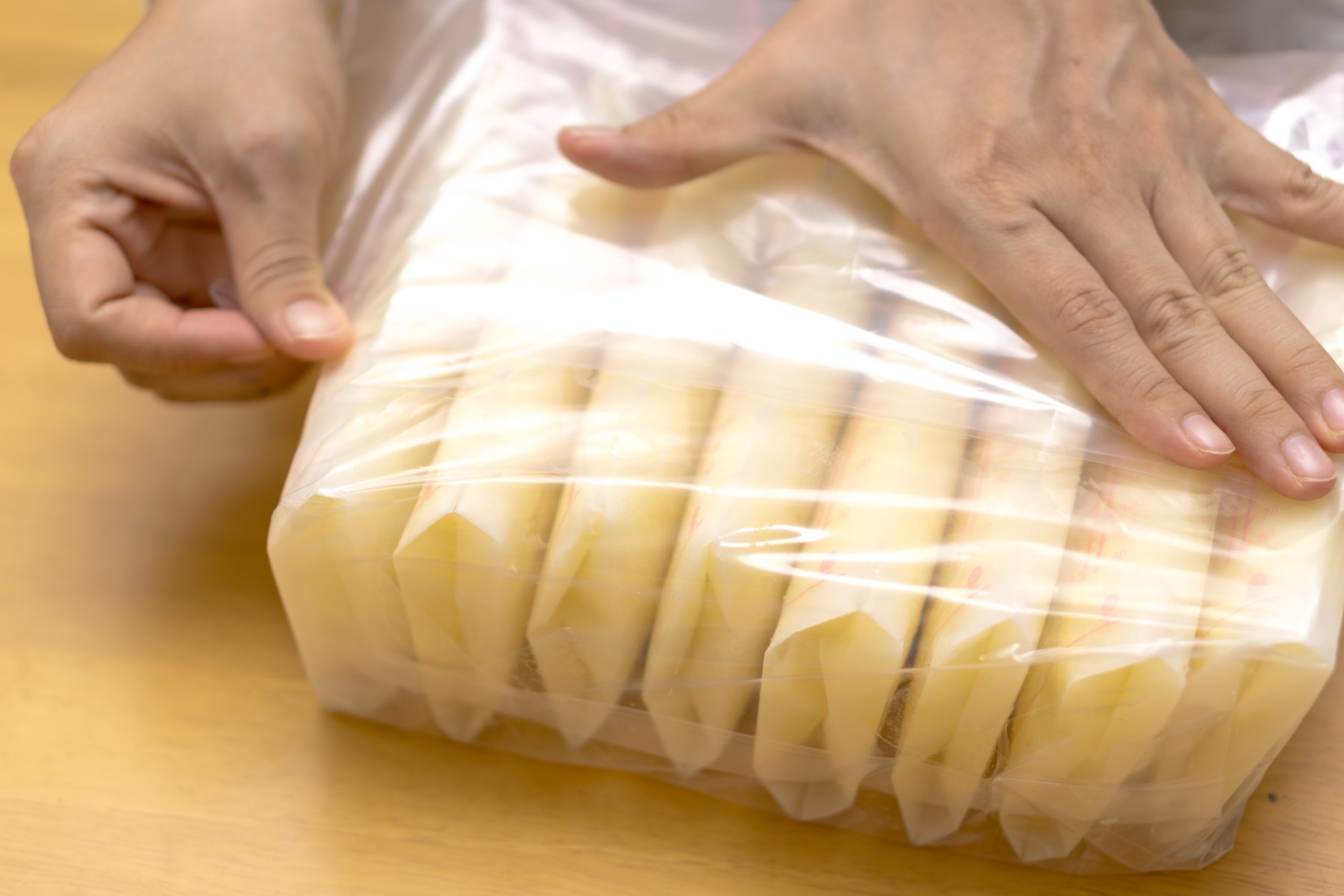
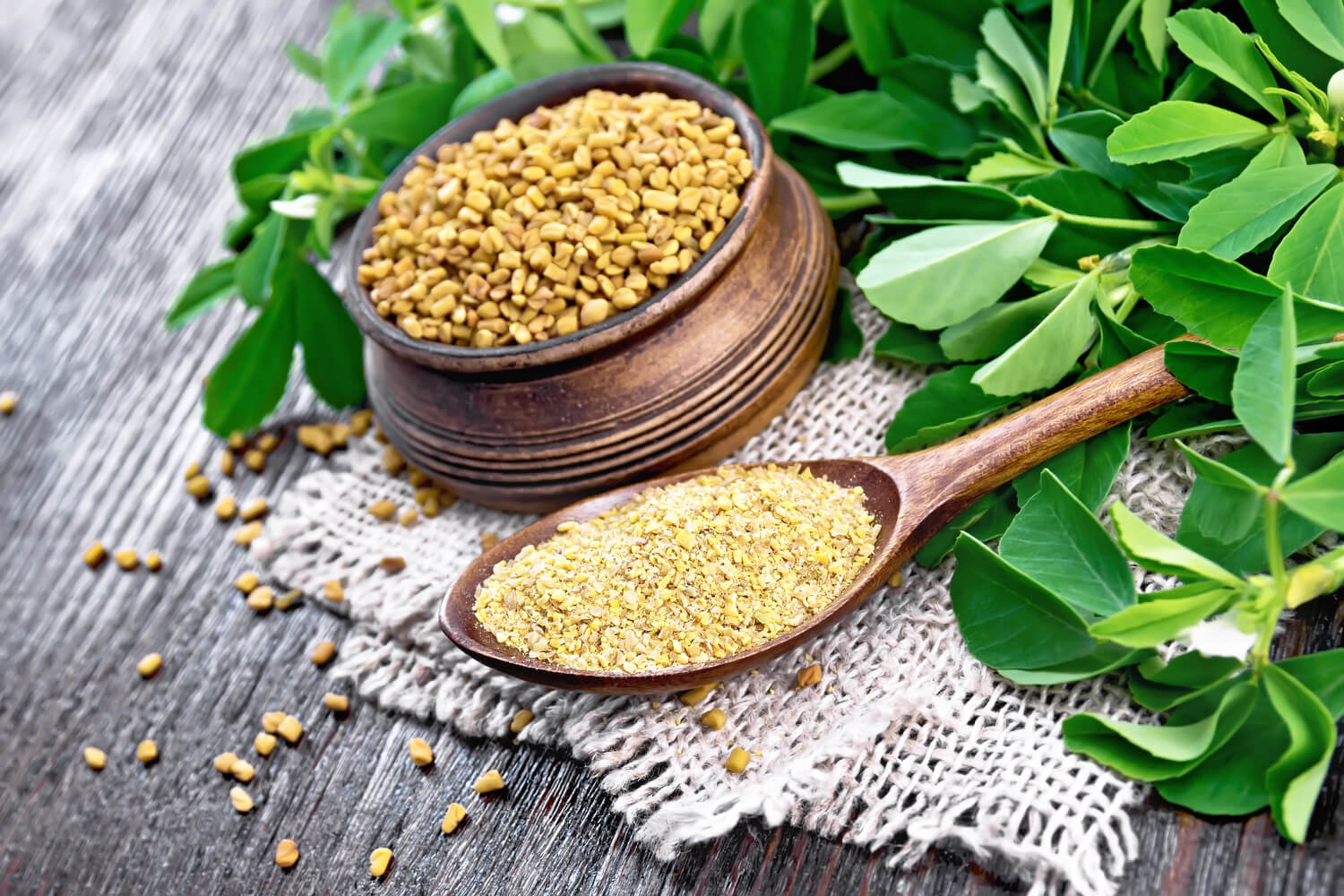

0 thoughts on “How To Store Breast Milk While Traveling”